Is the heater control on your Chevy Silverado not working, and do you want to know what you can do to fix it? You’ve come to the right place, for we have researched this question, and we have the answer for you.
The solution to this problem is fixing the cause. Listed below are potential causes:
- Low coolant
- Bad thermostat
- Problematic heater core
- Clogged hose to/from the heater core
- Bad water pump
- Failing heater blower motor
- Failing switch
Let’s look at each of these causes in more detail in the succeeding sections. We included details on what you can do in each case to fix the problem. Read on!
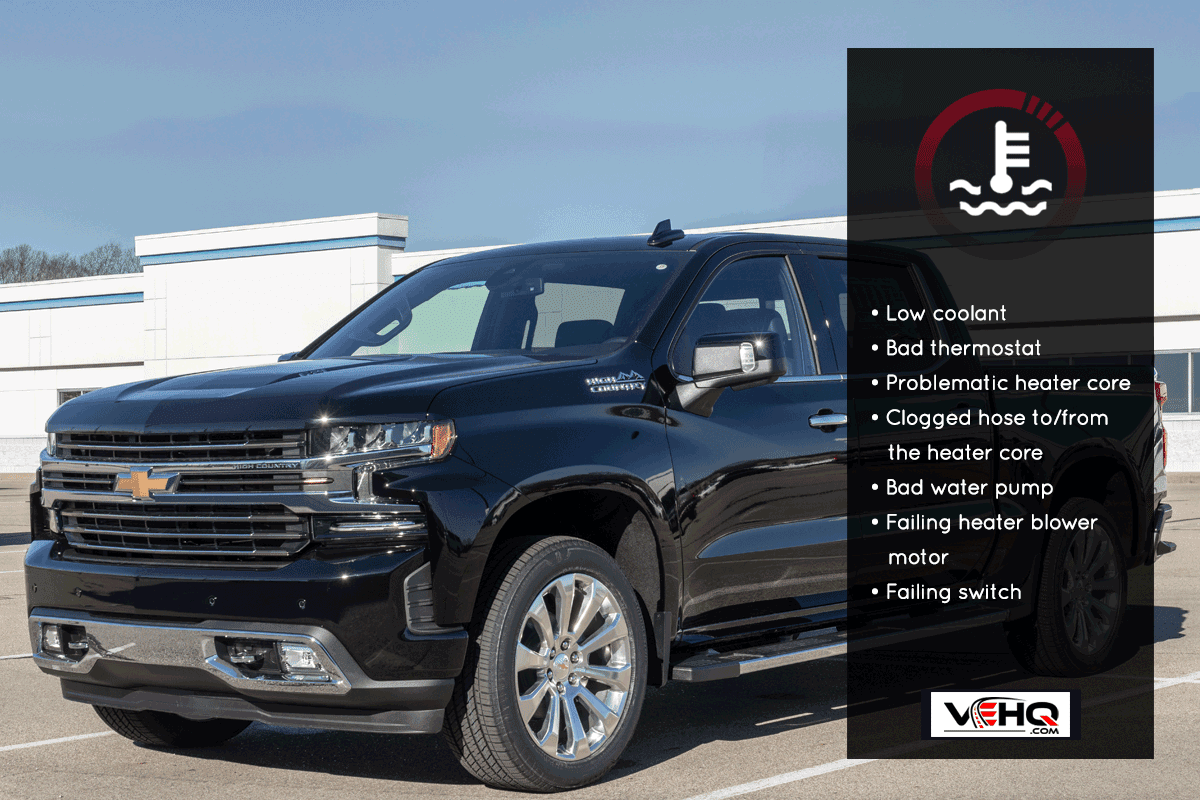
How does the car heat work?
Before we talk about the different causes of a bad heater, let’s look at how a car heater works. Your car needs a source of heat for the heater to work. And the engine continuously produces heat as a byproduct of combustion while it is running.
Your car’s heating system redirects some of the heat from the engine to a small radiator behind your car's dashboard. This small radiator is the heater core. The heater uses the same coolant that brings the engine's heat to the radiator.
A blower pushes air through the heater core to warm it and push it into the passenger cabin of your Silverado. When you switch your climate control to heating, the AC is turned off, and the ducts for the warm air to get into the passenger cabin open.
How does low coolant affect the heating system?
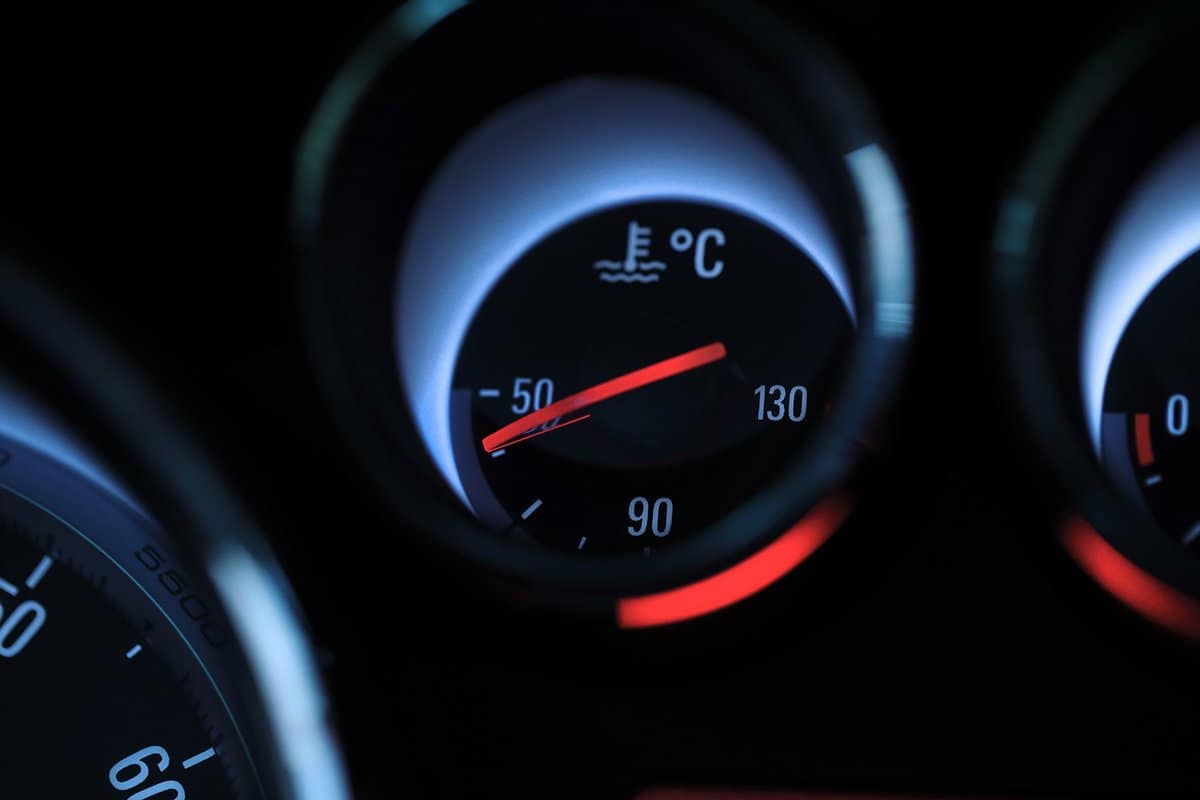
A low coolant makes the heat distribution system of your car less effective. This includes moving some heat from the cylinder heads to the heater core.
Check the coolant level and refill as needed. Never use a coolant that is not made for your car. Wait for your car to cool for a few hours before you check the coolant level.
Look for coolant leaks. Coolant does not evaporate easily. The coolant level should stay the same until it is time to flush the coolant and replace it.
Coolant Leaks
Coolant leaks can be internal or external. External leaks cause pools of coolant under your car. Internal coolant leaks mean that the leaking coolant goes into the engine and mixes with the fuel or oil.
If the coolant level is low, but you do not see coolant drips under your car, then the problem is likely an internal coolant leak. This is often caused by overheating that creates leaks in the head gasket that allows the coolant to mix with the motor oil and fuel.
The head gasket is the seal that separates the engine block and the cylinder heads.
Check your oil dipstick. If you see a milky color in your oil, that is coolant. Alternatively, smell your dipstick. The oil that has coolant contamination has a sweet smell.
A white exhaust smoke means that the coolant mixes with the fuel. Have a professional mechanic fix the issue as soon as possible because this can cause engine failure. The oil that has coolant contamination will no longer be effective in lubricating your engine.
How to detect a bad thermostat?
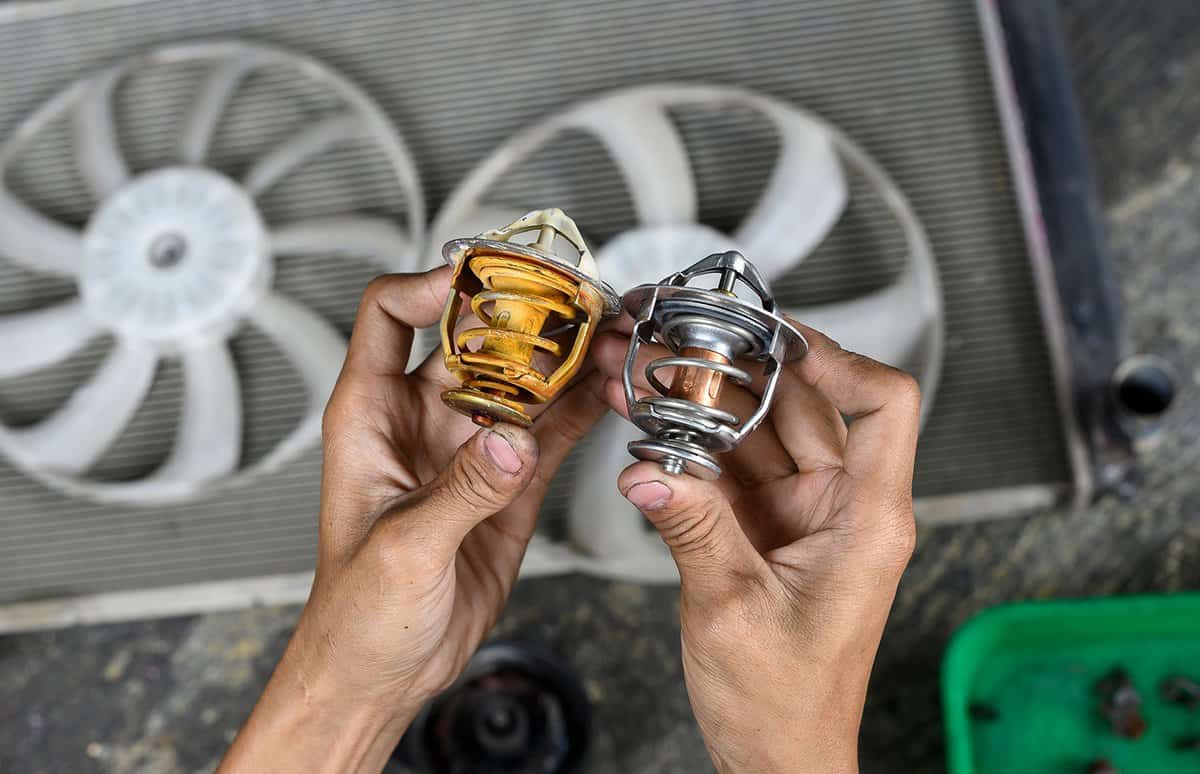
The ideal engine temperature is between 194 to 221 degrees. Combustion works best at this temperature, with fuel consumption at its most efficient. Thus, your Silverado's cooling system maintains the engine's temperature to around this level.
The thermostat's function is to prevent the coolant inside the engine from leaving. The water pump will simply move the coolant around the engine through a bypass tube at this stage, never reaching the radiator. Your car's cooling system stays at this stage until the engine reaches the ideal temperature above.
Once the engine reaches the ideal temperature, the thermostat opens the tube to the radiator. The coolant will now be able to reach the radiator, where the radiator fins will dissipate the heat from the coolant. A cooler coolant will return to the engine to lower its temperature.
A failing thermostat will stay open or stay closed. This causes the temperature inside the engine to rise beyond the ideal temperature or to never reach the ideal temperature.
Bad Thermostat
A bad thermostat keeps the coolant within the engine’s cooling jacket. This prevents the coolant from traveling to the heater core to transfer heat to it. Thus, there will be no heat when you activate the heater function.
In another scenario, a bad thermostat can stay open a prevent the engine to generate enough heat for the heater core.
Replacing A Bad Thermostat
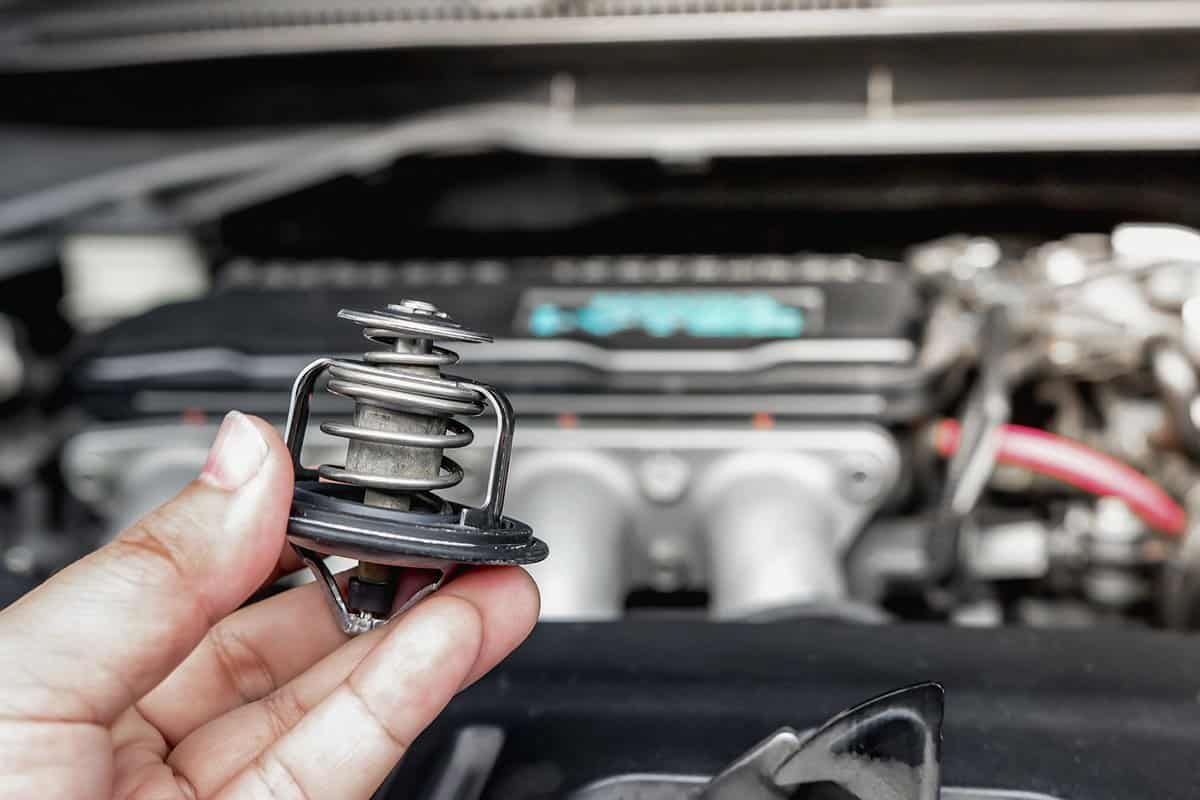
A bad thermostat is either always open or always closed. The only way to fix a bad thermostat is to replace it. And this is something that you can do yourself by following the steps below:
- Follow the radiator hose until you find metal housing.
- Place a drain pan under your car to catch coolant that will leak.
- Loosen the clamp that keeps the hose in place.
- Pull the hose out and drain the coolant into the pan.
- Remove the bolts or nuts of the thermostat housing.
- Pull out the cover and remove the bad thermostat.
- Flick the small toggle switch on the new thermostat and make sure that it is pointing upward.
- Put in the replacement thermostat. Follow the same position as the old thermostat.
- Reinstall the cover. Reinstall the bolts or nuts that keep the cover in place.
- Reinsert the hose and clamp it.
ACDelco, GM original equipment engine coolant thermostat is available on Amazon through this link.
How to detect a problematic heater core?
The heater core could leak and cause it to become ineffective in taking some of the heat from the engine.
The most common symptom is a small puddle of coolant on the passenger side of the car. You can smell antifreeze from the vents if the heater core has leaks. Additionally, smoke coming from the vents when you turn on the heater means that there is a leak on the heater core.
Replacing The Heater Core
Replacing the heater core is the best solution.
Unfortunately, some heater cores are buried under the dashboard. You’ll have to remove the dashboard and everything on it before you can replace the heater core.
To make sure that the job is done right, bring your Silverado to a mechanic to replace the heater core.
Clogged Hose
A pair of hoses bring the coolant into the heater core and takes that coolant out. A blockage in any of these two hoses can cause your heater core to receive very little to no coolant.
Without coolant entering the heater core, the heater core will not heat up. No warm air will enter the passenger cabin when the blower blows air through the heater core.
Bring your car to a mechanic to look for the blockage. The mechanic will be able to determine if they can clear the blockage or if any of the hoses need replacement.
What are the symptoms of a bad water pump?
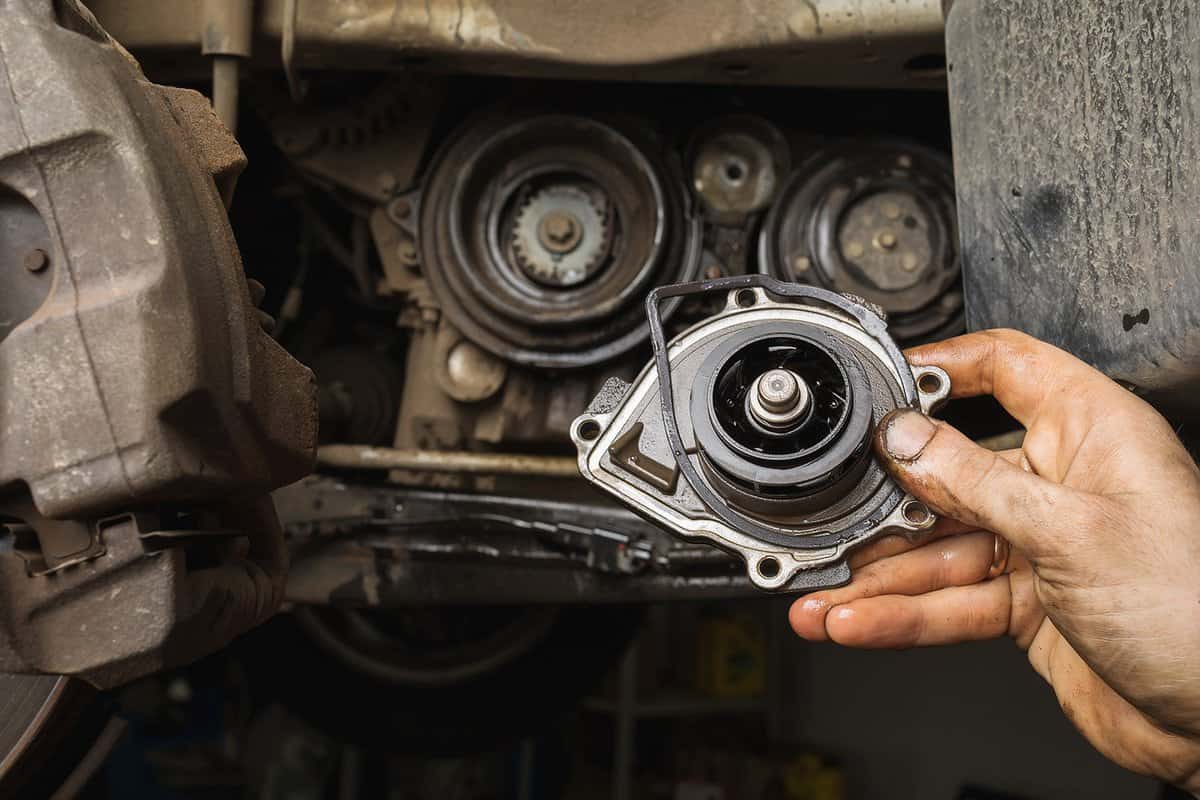
The water pump is responsible for circulating the coolant to all the systems that it needs to reach, like the radiator or the heater core. Thus, a failing water pump will cause your engine to overheat and your heater core to not produce enough heat.
A failing water pump will also have coolant leaks coming from it. This is because the seals around the water pump are also beginning to fail.
Replacing A Water Pump
A failing water pump needs to be replaced. Replace the water pump gasket when you replace the water pump.
Follow the steps below to replace the water pump. Alternatively, you can bring your car to a mechanic to replace the water pump for you.
- Park on level ground. Turn off your car and let it cool. Never work on the cooling system while the car is hot.
- Remove any parts that are blocking your access to the water pump, like the battery and the battery box.
- Loosen the belt by pulling the tensioner pulley downward with a wrench.
- Remove any pulley that is on the way to better access the water pump.
- Drain your cooling system.
- Place a drain pan under the car to catch any remaining coolant.
- Remove the bolts that fasten the water pump. Make sure to mark the position of each bolt because the bolts do not always have the same lengths or position of threads.
- Clean off the old gasket using a plastic scraper.
- Install the new water pump and gasket. Start by positioning two screws in opposite holes. Apply some thread locker on the bolts as you reinstall them.
- Reconnect any pulley.
- Reconnect the belt.
- Reinstall any other parts that you took away.
Failing Heater Blower Motor
The blower is what sends the warm air into the passenger cabin unless it starts to fail. Bring your car to a professional mechanic to replace it for you since it can be as difficult as the heater core to reach.
Failing Switch
A failing switch will no longer be able to control the blower motor's speed. The mechanic can check this too once he replaces the blower motor.
Conclusion
There are several reasons why the heater will not work. Check each possible cause.
If you enjoyed reading this article, you might find the articles below equally interesting:


